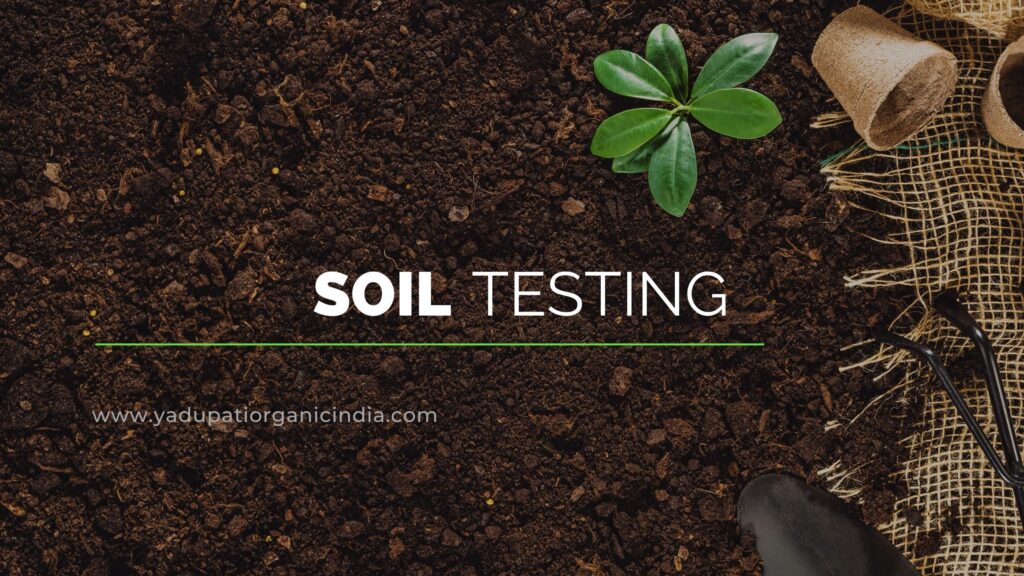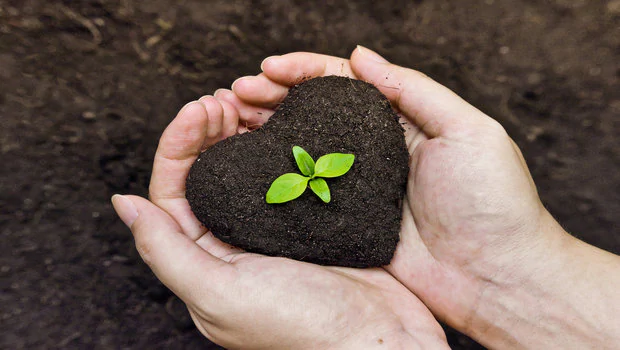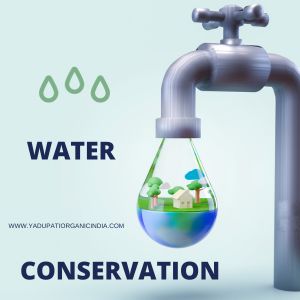Table of Contents
ToggleIntroduction

Organic farming is an agricultural approach that emphasizes sustainable and environmentally friendly practices to produce food. Unlike conventional farming, which often relies on synthetic chemicals and genetically modified organisms, organic farming promotes the use of natural methods to enhance soil fertility, control pests, and manage weeds. The primary goal of organic farming is to create a balanced and harmonious ecosystem that supports both agricultural productivity and environmental health.
Key principles of organic farming include:
- Soil Health: Organic farmers prioritize the health of the soil as the foundation of a successful farming system. They use techniques such as crop rotation, cover cropping, and composting to maintain and enhance soil fertility. Avoiding synthetic fertilizers and pesticides helps preserve the natural microbial activity in the soil.
- Crop Diversity: Organic farming encourages the cultivation of a variety of crops to promote biodiversity and reduce the risk of pests and diseases. Crop rotation is commonly employed to break pest and disease cycles and improve soil structure.
- No Synthetic Chemicals: Organic farmers avoid the use of synthetic chemicals, such as synthetic pesticides, herbicides, and fertilizers. Instead, they rely on natural alternatives like compost, manure, and biological pest control methods.
- Livestock Welfare: In organic farming, if livestock are part of the system, they are typically raised in conditions that allow for natural behaviors, access to outdoor spaces, and a diet that meets their nutritional needs without relying on synthetic additives.
- Genetic Modification: Organic farming prohibits the use of genetically modified organisms (GMOs). Instead, farmers focus on traditional breeding methods to develop crops that are well-adapted to local conditions.
- Sustainable Practices: The overall aim of organic farming is sustainability. This includes minimizing environmental impact, reducing energy consumption, and promoting long-term ecological balance.
- Certification: Many countries have established organic certification programs to ensure that products labeled as “organic” meet specific standards. These standards often cover aspects such as soil health, pest and disease management, and the avoidance of synthetic inputs.
Organic farming has gained popularity as consumers increasingly value environmentally conscious and healthy food choices. While it presents some challenges, such as lower yields compared to conventional methods, the benefits include improved soil health, reduced environmental impact, and the production of food without synthetic residues.
Soil Testing

Soil testing is a crucial process that involves analyzing a soil sample to assess its composition, nutrient levels, pH, and other properties. This information is essential for making informed decisions about agricultural practices, gardening, construction projects, and environmental management. Here are the key aspects of soil testing:
- Sample Collection:
- Collect soil samples from different locations within the area of interest. This ensures a representative sample of the entire area.
- Laboratory Analysis:
- Take the soil samples to a reputable soil testing laboratory. Many agricultural extension offices or private labs offer soil testing services.
- The laboratory will conduct various tests to determine soil properties, including nutrient levels (nitrogen, phosphorus, potassium, etc.), pH, organic matter content, texture, and cation exchange capacity (CEC).
- Interpretation of Results:
- Once the analysis is complete, you’ll receive a soil test report. This report provides information about the soil’s fertility status and recommendations for amendments or fertilizers needed to optimize plant growth.
- The results are typically presented in terms of nutrient levels and pH. Interpretation guidelines are often included to help users understand the implications of the results.
- Nutrient Management:
- Based on the soil test results, develop a nutrient management plan. This plan may involve adjusting soil pH, adding specific fertilizers, or incorporating organic matter to improve soil structure.
- pH Adjustment:
- Soil pH is critical for nutrient availability. If the pH is too high or too low, it can affect the plant’s ability to absorb nutrients. Lime or sulfur may be recommended to adjust pH levels.
- Fertilizer Application:
- Fertilizer recommendations will depend on the nutrient levels in the soil. Fertilizers can be applied to correct deficiencies and promote healthy plant growth.
- Organic Matter and Soil Amendments:
- If the soil lacks organic matter, recommendations may include adding compost, manure, or other organic materials to enhance soil structure and fertility.
- Regular Testing:
- Soil conditions can change over time, so it’s advisable to conduct periodic soil tests, especially if there are noticeable changes in plant growth or if different crops are being cultivated.
Soil testing is a valuable tool for sustainable and efficient land use. It helps to optimize agricultural productivity, conserve resources, and minimize environmental impact by tailoring soil management practices to specific needs
Pest Control in Organic Farming

Pest control refers to the management and regulation of pests, which are organisms that can be harmful to human health, the environment, or property. Pests can include insects, rodents, birds, and other organisms that interfere with human activities. Effective pest control is essential for maintaining a healthy and safe living or working environment. Here are some common methods and approaches used in pest control:
- Biological Control:
- Introducing natural predators, parasites, or pathogens to control pest populations.
- Using beneficial organisms to reduce the numbers of harmful pests.
- Chemical Control:
- Using pesticides or insecticides to eliminate or control pests.
- This method should be used judiciously to minimize environmental impact and risks to human health.
- Cultural Control:
- Modifying human practices, such as crop rotation, sanitation, and proper waste management, to reduce pest infestations.
- Mechanical/Physical Control:
- Using physical barriers, traps, or mechanical means to prevent or reduce pest populations.
- Examples include using screens on windows, sealing cracks and crevices, or employing traps.
- Integrated Pest Management (IPM):
- Combining multiple methods, such as biological, chemical, cultural, and mechanical controls, to achieve long-term pest control with minimal environmental impact.
- Hygiene and Sanitation:
- Proper waste management and maintaining a clean environment help prevent pest infestations.
- Education and Awareness:
- Informing individuals about pest prevention measures and promoting responsible pest control practices.
- Natural Predators and Parasites:
- Encouraging the presence of natural predators and parasites to control pest populations in a sustainable manner.
- Genetic Control:
- Using genetically modified organisms to control pest populations, such as sterile insects or crops with built-in resistance.
- Traps and Baits:
- Using traps or baits to capture or eliminate pests selectively.
It’s important to approach pest control with caution and responsibility, considering the potential environmental and health impacts of various methods. Integrated Pest Management (IPM) is a holistic approach that aims to combine different strategies for effective and sustainable pest control. Additionally, consulting with professionals in pest management can provide valuable insights and guidance for specific situations
Organic Fertilizer

Organic fertilizers are derived from natural sources and contain organic materials that provide essential nutrients to plants. Unlike synthetic or chemical fertilizers, organic fertilizers are made from organic matter such as plant and animal residues. They offer several advantages, including improved soil fertility, enhanced water retention, and the promotion of beneficial microorganisms.
Here are some common types of organic fertilizers:
- Compost: Compost is a well-known organic fertilizer made from decomposed organic matter such as kitchen scraps, yard waste, and manure. It is rich in nutrients and helps improve soil structure.
- Manure: Animal manure, such as cow, horse, or chicken manure, is a valuable source of organic nutrients. However, it should be composted or aged before use to prevent the risk of pathogens and reduce the chances of burning plant roots due to high ammonia content.
- Bone Meal: Bone meal is made from crushed and ground animal bones. It is a good source of phosphorus and calcium, essential for root development and overall plant health.
- Fish Emulsion: Fish emulsion is a liquid fertilizer made from fish remains. It is a good source of nitrogen, phosphorus, and trace elements. It is often used as a foliar spray or soil drench.
- Blood Meal: Blood meal is a byproduct of the meat industry and is high in nitrogen. It provides a quick-release nitrogen source for plants, promoting green leafy growth.
- Feather Meal: Feather meal is made from ground poultry feathers and is a slow-release source of nitrogen. It helps improve soil structure over time.
- Seaweed and Kelp: Seaweed and kelp extracts are rich in micronutrients, growth hormones, and amino acids. They stimulate plant growth, enhance nutrient uptake, and improve resistance to stress.
- Green Manure: Certain cover crops, like legumes or clover, are grown and then incorporated into the soil to improve fertility. This practice is known as green manure.
Organic fertilizers contribute to sustainable and environmentally friendly agricultural practices. They improve soil health, increase microbial activity, and reduce the risk of soil degradation. However, it’s important to note that organic fertilizers may release nutrients more slowly than synthetic fertilizers, requiring proper timing and application to meet the needs of growing plants. Additionally, the nutrient content can vary, so it’s essential to understand the composition of the organic fertilizer being used
Water Conservation

Water conservation is a critical practice aimed at reducing the amount of water used or wasted in various activities. It is essential for preserving water resources, ensuring sustainability, and mitigating the impact of water scarcity. Here are some key aspects of water conservation:
- Efficient Water Use:
- Fixing leaks: Repairing leaks in plumbing and irrigation systems helps prevent water wastage.
- Water-efficient appliances: Using appliances like low-flow toilets, water-saving washing machines, and dishwashers can significantly reduce water consumption.
- Outdoor Water Conservation:
- Drip irrigation: Drip irrigation systems deliver water directly to the base of plants, minimizing evaporation and runoff.
- Xeriscaping: Landscaping with drought-resistant plants and using mulch can reduce the need for excessive watering.
- Education and Awareness:
- Promoting awareness about the importance of water conservation through educational programs and campaigns can encourage individuals and communities to adopt water-saving practices.
- Industry and Agriculture:
- Implementing water-efficient technologies and practices in industries and agriculture can contribute to significant water savings.
- Precision agriculture: Using technology to optimize irrigation and monitor soil moisture levels helps farmers use water more efficiently.
- Policy and Regulations:
- Governments can implement and enforce water conservation regulations to ensure responsible water use.
- Incentives: Providing incentives for businesses and individuals to adopt water-efficient technologies and practices can drive positive change.
- Rainwater Harvesting:
- Collecting rainwater for later use in gardens or for non-potable purposes is an effective way to reduce reliance on conventional water sources.
- Wastewater Management:
- Treating and reusing wastewater for non-potable purposes such as irrigation or industrial processes can reduce the demand on freshwater resources.
- Personal Habits:
- Individuals can contribute to water conservation by adopting simple habits, such as turning off the tap while brushing teeth, taking shorter showers, and only running the dishwasher or washing machine with a full load.
- Technology and Innovation:
- Advancements in technology, such as smart irrigation systems and water-saving devices, contribute to more efficient water use.
- Monitoring and Data Analysis:
- Regular monitoring of water usage and analyzing data can help identify areas for improvement and guide effective water conservation strategies.
Water conservation is crucial for ensuring a sustainable and resilient water supply for future generations. By implementing these practices at individual, community, and institutional levels, we can contribute to the preservation of this essential resource
Conclusion
Organic farming has gained significant attention and popularity in recent years due to its focus on sustainability, environmental stewardship, and the production of chemical-free, nutritious food. As we draw conclusions about organic farming, several key points emerge:
-
Environmental Benefits:
- Organic farming promotes biodiversity, soil health, and conservation of natural resources. The avoidance of synthetic pesticides and fertilizers helps prevent soil and water pollution.
- Crop rotation, cover cropping, and other organic practices contribute to improved soil structure, water retention, and reduced erosion.
-
Health Considerations:
- Organic farming prohibits the use of synthetic pesticides and genetically modified organisms (GMOs), aiming to produce food without residues of harmful chemicals. This may contribute to healthier ecosystems and potentially reduce health risks for consumers.
-
Nutritional Content:
- While there is ongoing debate, some studies suggest that organic produce may contain higher levels of certain nutrients and antioxidants compared to conventionally grown counterparts. However, more research is needed to draw definitive conclusions on this matter.
-
Economic Challenges:
- Organic farming often requires more labor and may have lower yields compared to conventional methods. The transition from conventional to organic farming can be challenging for farmers, especially during the initial years.
-
Consumer Demand and Market Growth:
- Growing consumer awareness and demand for organic products have led to a significant expansion of the organic market. This has encouraged more farmers to adopt organic practices and has created economic opportunities within the organic farming sector.
-
Global Implications:
- Organic farming has the potential to contribute to global food security and sustainability goals by promoting agroecological practices that are less reliant on external inputs.
-
Policy and Certification:
- Government policies and certification standards play a crucial role in regulating and promoting organic farming. These standards ensure that organic products meet specific criteria, giving consumers confidence in their choices.
-
Continuous Research and Innovation:
- Ongoing research is essential to address challenges and optimize organic farming practices. Innovations in organic agriculture, such as integrated pest management and precision farming, can enhance productivity while maintaining sustainability.
In conclusion, organic farming presents a holistic approach to agriculture that prioritizes environmental health, consumer well-being, and long-term sustainability. While challenges exist, ongoing support, research, and collaboration within the agricultural community can further strengthen the viability and impact of organic farming on a global scale.
